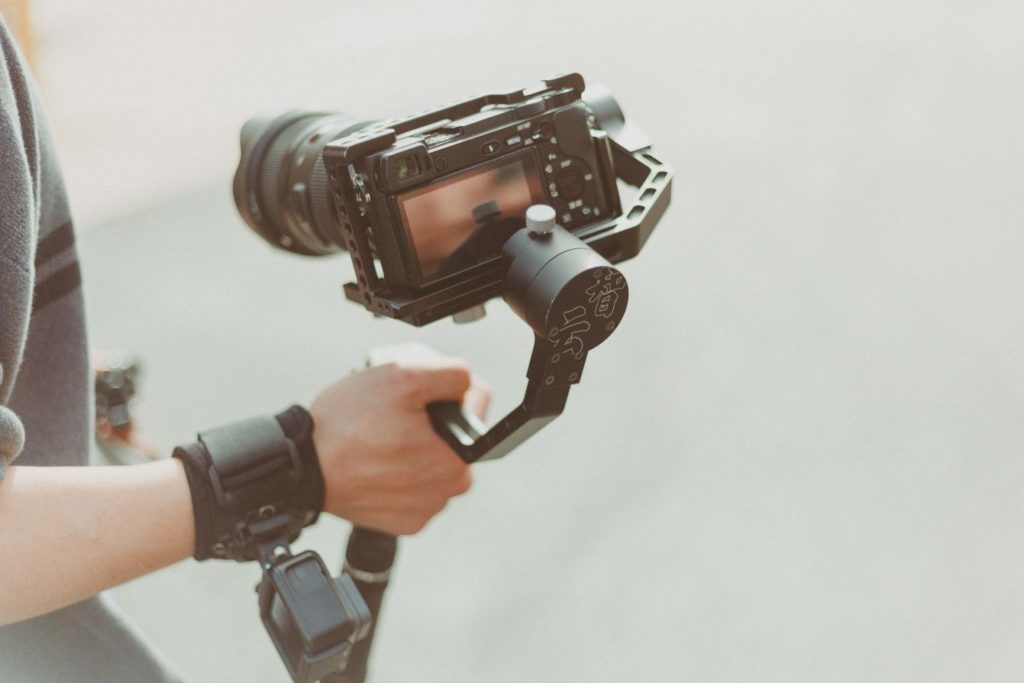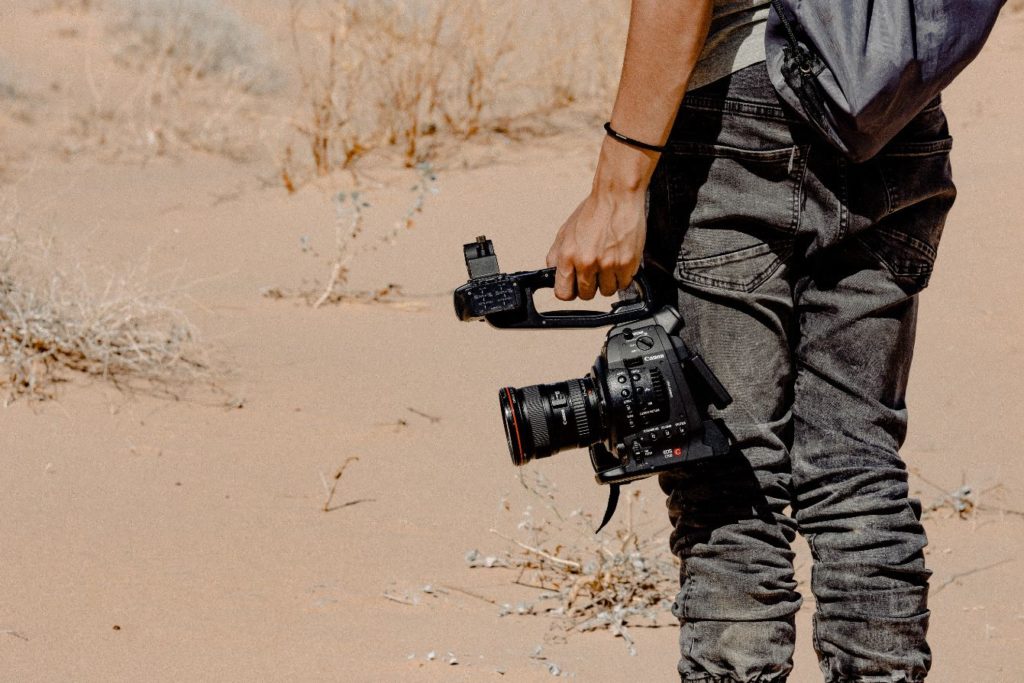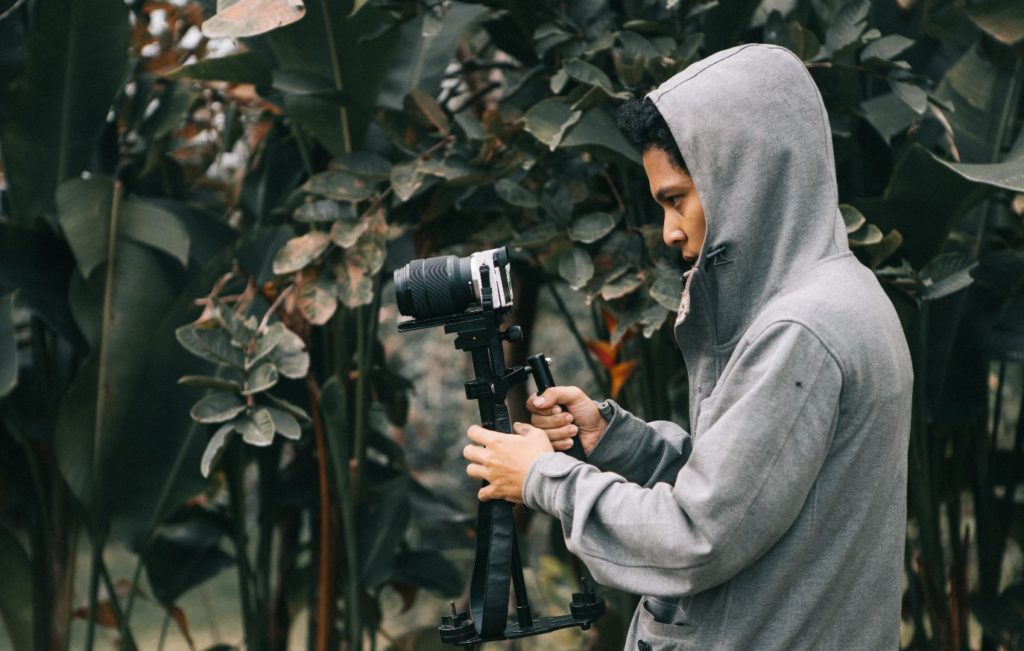To introduce smooth movement into your videos, you will need to invest in a camera stabilizer. But what’s best – a stabilizer, gimbal, or something else?
Until recently, smooth camera movement was very much the preserve of professional productions, which could lay down dolly tracks or set up cranes and jibs, or use a dedicated Steadicam operator. However, first DSLR cameras, then mirrorless cameras, and now smartphones have opened up photography and videography to everyone, and with them have come more affordable camera stabilizers, whether handheld or gimbals or even vests.
Choosing the best camera stabilization device and getting the most out of it might seem a little overwhelming, but it shouldn’t be. Here’s why you need a camera stabilizer and how to make it work for you.
Summary
Part 1: Do You Need a Stabilizer?
Movement brings dynamism to your storytelling. It gives you freedom. It can intensify the relationship between your subject and your audience. It can immerse your audience in a scene.
If you’re a wedding videographer, you might want to be able to move easily about the wedding and its reception, getting a feel for the setting, the people, and everything that is going on. You need to be discreet and be able to move fast, perhaps equivalent to a dolly in or a dolly outshot.
For a travel vlogger, beautiful smooth shots of their destinations are a must-have, which makes camera stabilization, whether for smartphone or DSLR, essential. You might want to get yourself into a tight or unusual space, or just capture the sights and sounds of a city as you move around, tilting up and down.

Any documentary maker will want to think about camera movement in their work, especially if it follows people or processes. To keep it looking professional and maintain credibility, a camera stabilizer will be necessary.
When you film someone who’s skateboarding or moving in some other way, you’ll want to move with them. And that means you’ll need a camera stabilizer. Getting down low or up high could really change the look and feel of your work.
In fact, just about every type of video you might want to make can benefit from movement, but nothing shrieks “amateur” more than wobbly, shaky handheld video footage. While wobble and shake do have their place in filmmaking (think The Blair Witch Project), for a professional look, you want smooth results, and that requires camera stabilization. Setting up your camera on a tripod is a great first step to camera stabilization – and is probably best for interviews – but if you want to be able to move more freely, then you need other options.
Part 2: The Difference between a Stabilizer and a Gimbal
Let’s clear up something before we go any further, a gimbal is a type of camera stabilizer. While all gimbals are camera stabilization devices, not all camera stabilization devices are gimbals. For these kinds of on-the-go camera stabilizers, you can look to handheld stabilizers and vests, too. They all have their pros and cons and will suit different types of cameras and filmmaking.
Handheld stabilizers are the cheapest and lightest option. They do rely heavily on the operator to make them effective so unless you really are on a budget, you might want to head toward a gimbal or vest.

A gimbal is a battery-operated device that can correct for unintentional wobbles and shakes by using motors and sensors. It works around 3 axes: pitch (or tilt), roll (like the rocking of a boat), and yaw (or left-to-right movement, like panning). It does struggle to correct for vertical movements, such as climbing a flight of stairs, though.
Gimbals can come in 2- or 3-axis versions. A 2-axis gimbal does not usually correct for panning shake, but it does have the benefit of better battery life and is lighter than a 3-axis gimbal. All the same, gimbals might start off feeling light, but they will become a drain and this needs to be thought about.

There are gimbal stabilizers for smartphones and DLSR and mirrorless cameras, so whatever you are working with, you’ll find a camera stabilizer that’s suitable. Before using a gimbal, don’t forget to check that your batteries are charged and you have spares, too. You will also need time to balance a gimbal before you start using it. This can take up to fifteen minutes and shoot with an unbalanced gimbal will negate its intended purpose.
A vest really is a vest that you wear. If you’ve ever watched live sports, you might well have seen a Steadicam operator capturing action shots. Steadicam is the brand name of the first vest stabilizer that was developed by Tiffen. A bit like “Hoover” the name has stuck. Vest stabilizers tend not to use batteries but are better suited to bigger and heavier cameras. This means that they can put enormous physical strain on the operator, so if you plan on using one you need to be prepared for it.
Whatever type of camera stabilizer you choose it is important to include its use on your shot lists. It will take extra time to set up a stabilizer and you might need to accommodate a break for the operator, too.
Part 3: Top 3 Gimbal Stabilizers Used by Pros
The best camera stabilizer for you might not be the best camera stabilizer for another videographer. It’s about deciding on what your priorities are for the camera that you have and the type of videos you do. Here are the top gimbal stabilizers for DSLR cameras, as well as gimbal stabilizers for mirrorless cameras or smartphones, as you can never have enough image stabilization.
1. DJI RS 2 Combo
Price: $849 USD
The DJI RS 2 is a 3-axis stabilizer with a load capacity of 10lbs (about 4.5kg) and a battery run time of 12 hours. It weighs just under 3lbs (or 1.5kg), so shouldn’t be too much of a strain on you.
2. Zhiyun Crane 2S
Price: $599.00 USD
The Zhiyun Crane 2S isn’t Zhiyun’s top-of-the-range gimbal, but with 12-hour battery life, features such as a quick-release plate, flexible mounting options, and both digital and mechanical focus control it offers you a great deal.
If you’re looking for a gimbal stabilizer for iPhones or other smartphones, start by looking at the Zhiyun Smooth 4. It’s very reasonably priced at $99.99 USD, even if it can’t support more than a smartphone, so for smooth movement on the go, it’s worth consideration.
3. FeiyuTech G6
Price: $399.95 USD
For mirrorless cameras, have a look at the Feiyu G6 Max. It’s a 3-axis gimbal that can carry up to 1.2kg (so a Sony A7 series camera with a short lens), is splash-proof, and has wi-fi control.
Other Things to Consider
In practical terms, you need to think about weight, balance, battery life, and versatility when choosing a gimbal.
- The weight of the camera stabilizer itself is something you need to think about, but the optimal weight of the camera for the stabilizer is important, too. The camera cannot be too heavy for the kit, but it mustn’t be too light, either.
- How quick and easy is a gimbal to balance? You don’t want to have to spend ages preparing your gimbal every time that you go to use it. If it takes too long, you’ll end up not using it all because it’s not time-efficient.
- What’s your chosen gimbal’s battery life like? If it’s too short, it won’t be useful for you.
- Think about how you want to use your gimbal and the type of camera and lenses with which you will be using it. Giving yourself as much flexibility as possible will make your gimbal more rather than less useful.
Creatively, it’s wonderful to have the freedom of movement that a gimbal or other stabilizers offer you. Remember to have something in the foreground that will emphasize the movement of the camera. But you need to be considered in how you use it. You don’t want to be using a camera stabilizer and introducing movement into a scene for the sake of it. Every movement needs to be motivated by the story that you’re telling. If the shot can be accomplished just as effectively without movement, do you need to move?
Camera stabilizers come in different shapes and sizes, suitable for various projects, and different cameras for photographers and videographers. However you want to introduce movement into a scene of your videos or shots, there will be a camera stabilizer for you.



























